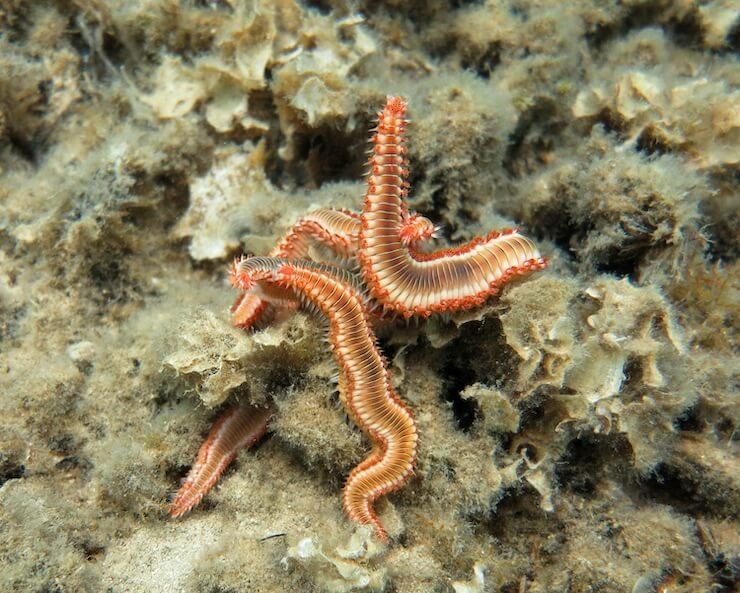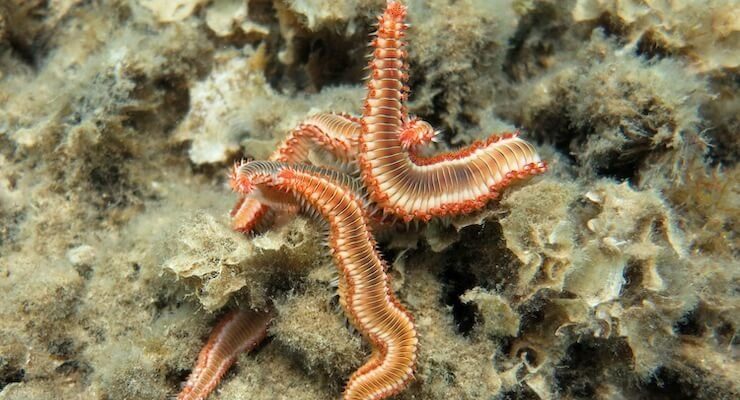
Bristle worms often get a bad rap, but they can be incredibly beneficial to your tank’s ecosystem. Meanwhile, fireworms can present a problem, especially if you handle them without caution. Knowing how to identify each one is key to maintaining a healthy marine environment. That’s what we’re going to tackle here. So, grab a seat and let’s dive into the world of these fascinating worms!
What Are Bristle Worms?
Bristle worms belong to a group called polychaetes, which are segmented worms commonly found in marine environments. They play a significant role in the ecosystem, primarily by breaking down organic matter. Think of them as nature’s cleanup crew. These worms have long, cylindrical bodies, often covered with tiny, hair-like structures called bristles, which can vary in color from brown to green or even reddish shades.
You might be wondering where you’ll find these creatures. Well, bristle worms typically inhabit sandy or muddy substrates in shallow waters. They can also make their homes in coral reefs, where they can contribute to the overall health of the ecosystem. If you look closely, you may notice them poking out from under rocks or within crevices, quietly going about their work.
It’s also important to note that bristle worms are generally harmless to humans. However, their bristles can cause slight irritation if touched, so it’s best to admire them from a distance. Many aquarists value them because they help aerate the substrate and keep it healthy.
What Are Fireworms?
Now let’s shift focus to fireworms. These guys are also polychaetes, but they come with a notorious reputation. Fireworms are usually longer and have a much brighter coloration, often featuring shades of red or orange. While they might seem pretty, their vibrant hues warn of their more dangerous nature—hence the name “fireworm.”
Fireworms are typically found in areas where there’s ample food, like coral reefs or near decaying matter. One distinguishing feature is their hairy bristles, which are actually modified setae that can deliver a nasty sting if you touch them. This defensive tactic helps them avoid predators, but it can leave an unwelcome mark on your skin if you’re not careful.
So why does it matter? Identifying fireworms is crucial because, unlike their harmless relatives, they can be harmful to your aquarium and to you. If you’re diving in the ocean or exploring your tank and come across one of these crimson critters, proceed with caution!
Key Differences Between Fireworms and Bristle Worms
Let’s get to the heart of the matter: how do you tell these two apart? Here are some key differences you should know:
- Color: Fireworms are often bright red, orange, or pink, while bristle worms are usually brown or duller colors. If you see a brightly colored worm, it’s likely a fireworm.
- Size: Fireworms tend to be longer, often growing up to a foot, while bristle worms usually stay smaller, around 3 to 4 inches.
- Bristles: The bristles of fireworms can cause painful stings. In contrast, bristle worms have bristles that can irritate but are not venomous.
- Habitat: Both types can be found in similar environments, but fireworms are generally more aggressive and are attracted to areas with lots of food, like decaying matter or coral.
Understanding these differences can prevent you from mistaking a harmless bristle worm for a fireworm—and potentially getting stung in the process.
Why Identifying These Worms Matters
You might wonder why all this identification matters. Well, knowing which worms are which can significantly impact your marine environment. Fireworms can be harmful to coral and other organism life, leading to a decline in tank health. If you’re an aquarium owner, you want your tank to be thriving, right?
Removing fireworms from your tank is essential for keeping unwanted damage at bay. Many aquarists will utilize traps or specific fish that naturally prey on these worms to keep their populations in check. On the other hand, understanding that bristle worms can actually benefit your tank means you should think twice before removing them outright.
In a more general sense, knowing which species you’re dealing with helps create a balanced ecosystem, whether in an aquarium or in natural waters. Just like in life, understanding your environment is key to maintaining harmony.
How to Handle Bristle Worms and Fireworms
If you discover either type of worm in your tank or during a dive, knowing how to handle them can save you a lot of trouble. Here’s a simple guide on what to do:
1. Identify the Worm: Use the differences we discussed earlier to determine if it’s a bristle worm or a fireworm.
2. For Bristle Worms:
– If you find them, it’s usually okay to leave them be, but do watch for any population explosions.
– If removal is necessary, use gloves to avoid any irritation from their bristles.
3. For Fireworms:
– Exercise extreme caution. Never try to handle them without gloves—you might be in for a sting!
– If you need to remove one, consider using a trap designed specifically for fireworms, or call in a professional if you’re unsure.
This approach not only protects you but also ensures the health of your aquarium or local ecosystem.
Identifying fireworms versus harmless bristle worms is more than just a fun fact for your next chat with a marine enthusiast. It’s essential knowledge for anyone involved in keeping reefs or exploring underwater habitats. Understanding the physical traits, behaviors, and impacts of these worms helps you maintain a healthier ecosystem.
So, the next time you spot a worm in the ocean or your aquarium, take a moment to appreciate these unique creatures. With a little bit of observation and care, you can ensure a thriving marine environment, making your underwater adventure far more enjoyable. Happy exploring!

